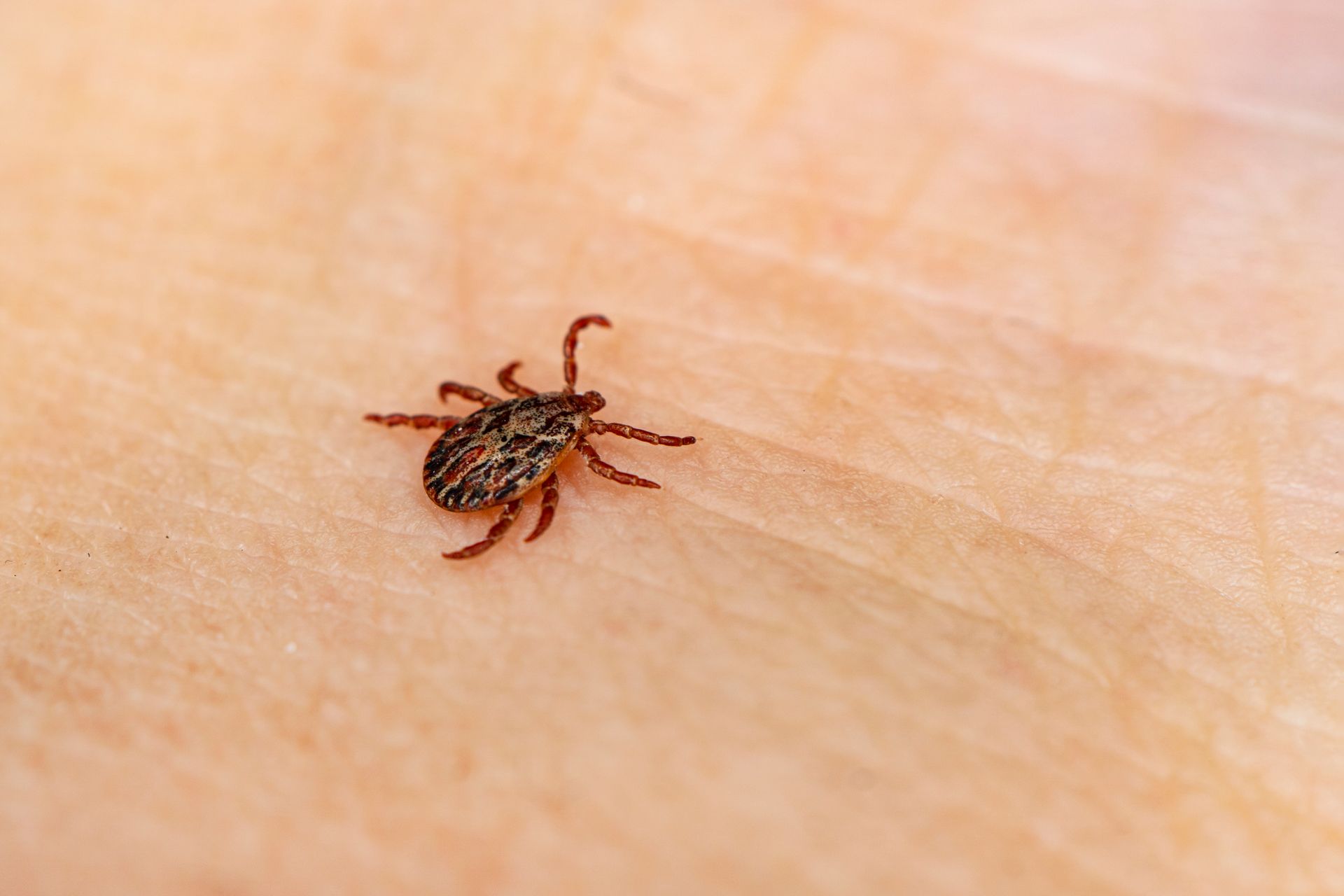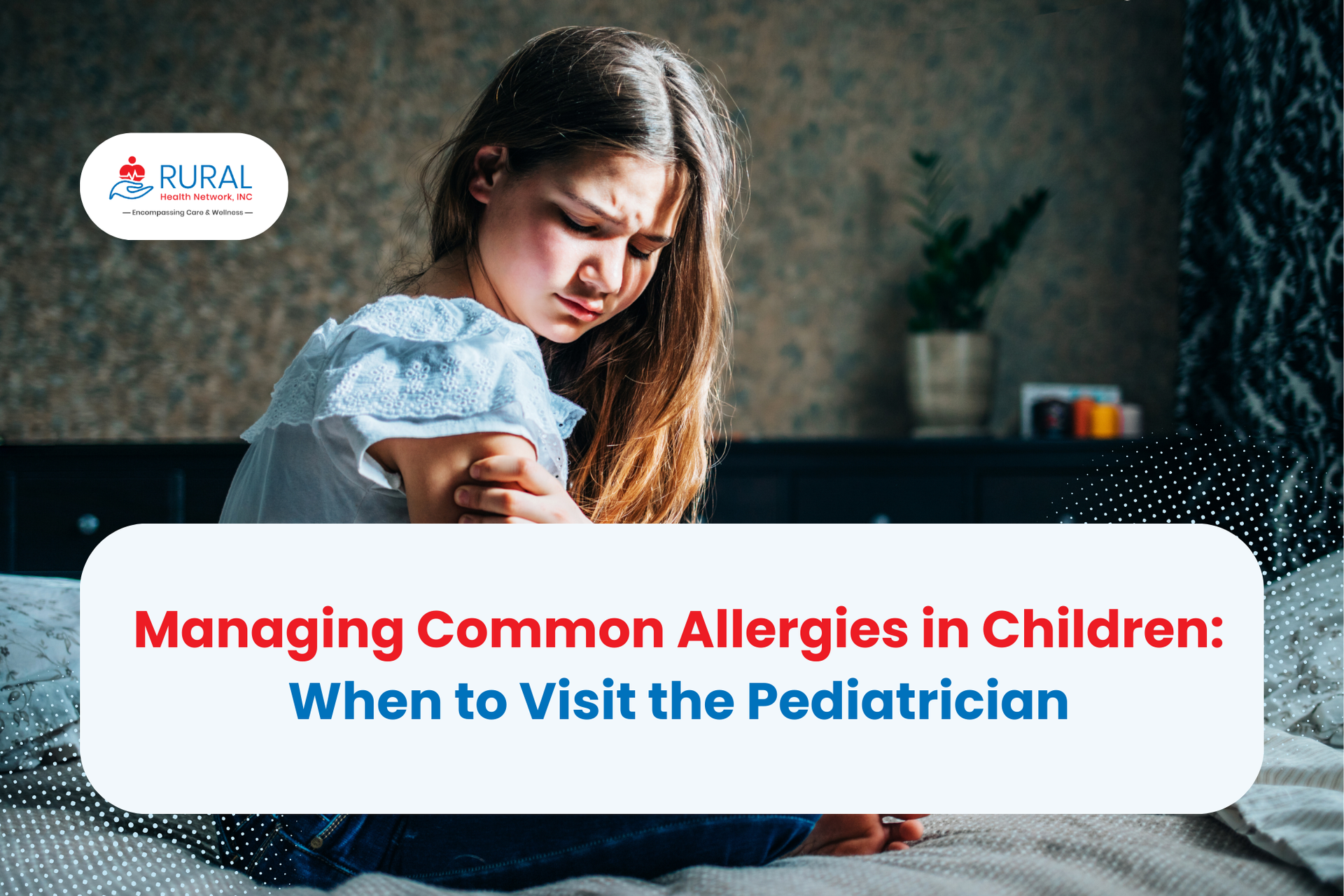Whether tending to your garden, hiking local trails, or just enjoying an evening on your porch, rural living often means being closer to nature. But this beautiful aspect of country life comes with some uninvited guests:
ticks.
Rural communities like ours face a higher risk of tick-borne illnesses simply because of our way of life. That’s why
Rural Health Network is here to help you stay informed and protected. This guide will help you spot symptoms, prevent bites, and know when to seek help so you can continue to enjoy rural living without worrying about tick-borne diseases.
Ticks Making You Nervous?
Common Tick-Borne Diseases in Rural Areas
Just as every region has its own flora and fauna, different areas face varying risks for tick bite symptoms and diseases. As ticks are more common in rural areas, always make it a habit to do thorough tick checks (especially after spending time outdoors) to
catch tick bites early and reduce the risk of infection.
Here are some of the most common tick-borne diseases and the regions where they’re most prevalent:
This bacterial infection is common in the Northeast, Midwest, and Pacific Coast.
- Black-legged ticks (deer ticks) cause Lyme disease.
- Most cases occur in 14 states, from Maine to Virginia and the Great Lakes region.
- Early symptoms include fever, headache, fatigue, and the characteristic "bulls-eye" rash.
This disease is more common in the Southeast and Mid-Atlantic regions.
- Several tick species, including the American dog tick, transmit RMSF.
- This disease can be severe if not treated early.
- Watch out for high fever, headache, muscle pain, and a distinctive spotted rash (often on wrists and ankles first).
These diseases are primarily found in the South, Central, and Mid-Atlantic states.
- The lone star tick and black-legged tick transmit anaplasmosis and ehrlichiosis.
- These diseases are more common during the spring and summer months
- Symptoms include fever, chills, muscle aches, and severe headaches.
This parasitic disease is most common in the Northeast and Upper Midwest.
- Black-legged ticks also transmit babesiosis.
- The disease affects red blood cells, making it especially dangerous for those with weak immune systems.
- Common symptoms include fever, fatigue, anemia, and chills.
Also known as red meat allergy or tick bite meat allergy, AGS is increasingly reported across the Southern and Eastern United States.
- AGS is caused by lone star tick bites.
- This condition can trigger allergic reactions to red meat.
- Symptoms can include hives, nausea, stomach pain, heartburn, and diarrhea.
See a Doctor If:
- Any symptoms develop after a tick bite—especially fever, rash, or extreme fatigue.
- Symptoms appear days or weeks after possible exposure (tick diseases don’t always show up right away).
- You experience severe symptoms, such as confusion, difficulty breathing, or a rapidly spreading rash.
Don’t hesitate to contact Rural Health Network if you notice any of the symptoms above or have other concerns. Our team is always here to help you evaluate your symptoms and provide appropriate care.
How to Prevent Tick Bites in Rural Communities
The best way to avoid tick-borne diseases?
Stop ticks in their tracks! With a few simple steps, you can protect yourself, your home, and your community.
Personal Protection Measures
✔ Dress Smart. Wear long-sleeved, light-colored clothing (to spot ticks easily), and tuck your pants into your socks.
✔
Use Repellents. Apply
EPA-approved tick repellents like DEET, picaridin, or oil of lemon eucalyptus. For added protection, treat clothing and gear with permethrin.
✔
Check Yourself. After spending time outdoors, do a full-body tick check, especially in hidden areas like behind the knees, underarms, and along the hairline.
Home & Yard Prevention
✔
Mow the Lawn. Keep grass short and remove leaf litter where ticks love to hide.
✔
Create Tick-Safe Zones. Use
gravel or wood chip barriers between your yard and wooded areas to keep ticks from migrating.
✔
Discourage Wildlife. Deer and rodents carry ticks. Fencing your yard or using natural deterrents can help keep them away.
Community & Livestock Protection
✔
Protect Pets & Livestock. Use tick collars, topical treatments, or oral medications to keep ticks off dogs, cats, and farm animals.
✔
Spread Awareness. Encourage community education programs so everyone knows the risks and how to stay tick-free.
No single method is 100% effective, but combining these strategies creates a strong defense against tick-borne diseases. But what if you do find a tick on yourself?
What to Do If You Get a Tick Bite
If you find a tick on your skin, don’t panic! The key is removing it quickly and correctly.
For safe removal, follow these steps:
- Grab your tweezers – Use fine-tipped tweezers (not fingers!) to avoid squeezing the tick’s body.
- Get close – With your tweezers, hold the part of the tick closest to your skin (right at the head/mouth area).
- Pull straight out – Slowly and steadily pull straight up. Don’t twist or jerk so you don’t leave parts of the tick behind.
- Clean up – Wash the bite area with soap and water or rubbing alcohol.
- Dispose of the tick – Drop it in alcohol, tape it shut in a bag, or flush it down the toilet.
DO NOT
After a tick bite, watch out for these symptoms in the next few days to weeks:
- Fever, chills, body aches
- Rash (especially a bull’s-eye rash for Lyme disease)
- Joint pain or fatigue
If you develop any of these, see your doctor, especially if you weren’t able to remove the tick completely.
Consider Tick Testing
While not necessary, some health departments and labs offer tick testing to check for diseases. This can’t confirm if you’re infected, but it can give you a heads-up on potential risks.
The Role of Healthcare Providers
While prevention is key, healthcare providers play an essential role when diseases break through your defenses. These experts diagnose and treat tick-borne diseases, which can be especially important in rural communities where access to care can be limited.
Early Detection Matters!
- Don’t Wait! – The sooner it is diagnosed, the easier it is to treat
- Antibiotics Save Lives - Lyme diseases and other bacterial infections respond well to early antibiotic treatment.
- Urgent Care for Severe Cases - Some diseases, like Rocky Mountain Spotted Fever (RMSF), require immediate medical attention to prevent complications.
Telehealth
For those living miles from a clinic, virtual doctor visits can be a lifesaver.
- Quick Consultations – If you’re unsure about a tick bite, a telehealth provider can assess symptoms and recommend the next steps.
- Faster Prescriptions – If needed, doctors can send prescriptions to the nearest pharmacy without an in-person visit.
Vaccinations for At-Risk Areas
While there is no vaccine for Lyme disease (yet), tick-borne encephalitis (TBE) vaccines are available in regions where the virus is common.
Always ask your doctor if vaccination is right for you.
Stay Tick-Free with Rural Health Network
Knowledge is powerful, but having the right healthcare partner completes your defenses. Prevention, early detection, and quick treatment are paramount, and
Rural Health Network is here to help!
We understand rural life because we live it, too! Our dedicated team offers:
- Expert care and guidance from providers who know local tick-borne disease patterns.
- Convenient appointment scheduling, including same-day visits when needed.
- Telehealth options for quick consultations.
- Clear communication and personalized treatment plans.
Whether you're dealing with a tick bite or just have questions about prevention, Rural Health Network is here for you. Need more guidance? We are just a call or click away! Together, we can help protect our community from tick-borne diseases while enjoying the beauty of rural living.
Stay Tick-Free and Worry-Free!













